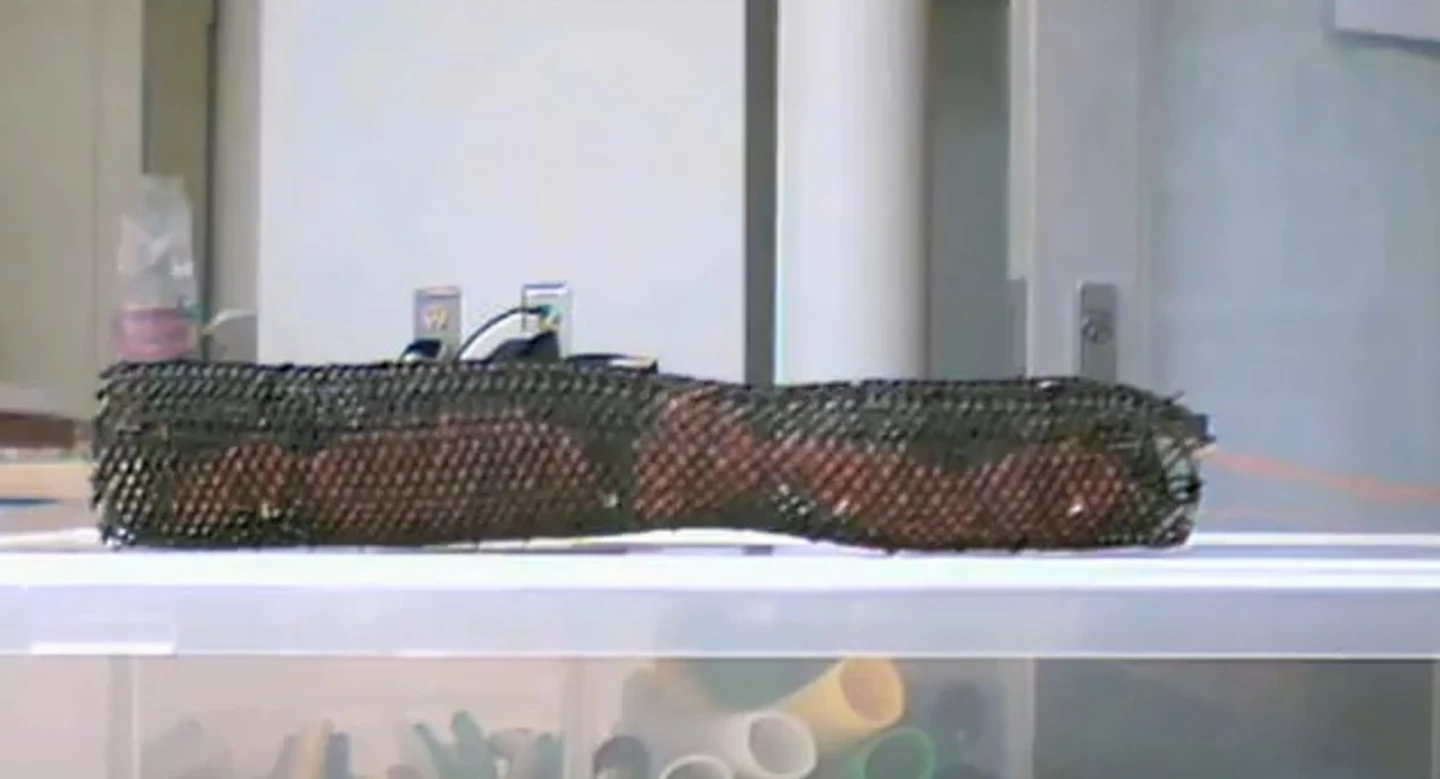In an effort to create robots with soft, pliable exteriors that would be suited to exploring hard to reach places and traversing bumpy terrain, a team of researchers from MIT, Harvard University and Seoul National University has developed a robotic earthworm called Meshworm. Moving in the same manner as an earthworm, it looks disturbingly like an earthworm as it crawls across the floor. However, unlike an earthworm and despite its soft exterior, it is remarkably tough and can survive hammer blows and even being trodden.
When the word “robot” comes up in conversation we tend to think of something solid and metallic with arms and legs – or wheels or tracks. However, Meshworm joins a growing list of creepy-crawly inspired robots, such as GoQBot, HyDRAS and Scalybot 2, and the particular locomotive advantages such creatures offer.
The research team, which was funded by a DARPA contract, wanted a robot capable of covering rough terrain and squeezing safely into very small spaces and the earthworm proved a valuable source of inspiration. Its form of locomotion is based on peristalsis, which is the rhythmic expansion and contraction of muscles that is also used by snails, sea cucumbers and even for moving food down the human esophagus and through the intestines.
Of course, Meshworm doesn’t have muscles – at least, not as we think of them. Instead, it’s made out of a flexible mesh tube comprised of a very springy heat-sealed polymer. This not only holds the Meshworm together, but also helps in moving because it’s built along the lines of a stretch sock and aids contractions.
The real “muscles” are a number of shape-memory wires made of a nickel/titanium alloy. Shape memory materials can be bent, squashed and otherwise twisted out of shape, but once released, they snap back into their original shape. This particular type of alloy wire has the peculiar quality of contracting when heated and then returning to its original shape what cooled. Some of these wires are wrapped around Meshworm’s polymer tube body in a coil, while other straight wires run from back to front.

Inside Meshworm, there is small battery and a circuit board running a computer algorithm. This package shoots an electric current through the wires, heating them and causing them to contract. By alternating heated and cooling areas, Meshworm can undulate like a worm and crawl forward. The algorithm can even make the robot move in patterns by using the longitudinal running wires to steer.
The soft components that make up Meshworm make it ideal for squeezing into small spaces that are inaccessible to other robots, and it can do so without damaging its surroundings. It is also incredibly tough as the researchers demonstrated by pounding it with a hammer and then walking on it.
“You can throw it, and it won’t collapse,” said team leader Sangbae Kim, the Esther and Harold E. Edgerton Assistant Professor of Mechanical Engineering at MIT. “Most mechanical parts are rigid and fragile at small scale, but the parts in Meshworms are all fibrous and flexible. The muscles are soft, and the body is soft … we’re starting to show some body-morphing capability.”
Meshworm is not the first attempt at a wormy robot. NASA, for example, studied the idea of a lunar rover in 1966 that moved by means of pneumatic bellows like the segments of a tomato worm. Since then, there have been all manner of artificial robot muscles running on motors, pneumatics, hydraulics and magnetic fluids. Unfortunately, these attempts required some pretty sophisticated mechanisms with equally sophisticated control systems.
Meshworm differs in that it is deceptively simple in design. All it needs is some circuitry, one set of wires coiling around the body to allow it to contract, and another set running its length to steer it. Even worms aren’t that streamlined.
According to the research team, possible applications for the Meshworm technology include endoscopes, implants and prosthetics, but Meshworm’s descendants may even show up in everyday gadgets. “Even though the robot’s body is much simpler than a real worm – it has only a few segments – it appears to have quite impressive performance,” Kellar Autumn, a professor of biology at Lewis and Clark College says. “I predict that in the next decade we will see shape-changing artificial muscles in many products, such as mobile phones, portable computers and automobiles.”
The results of the team’s work was published in a recent issue of IEEE/ASME Transactions on Mechatronics.
The video below describes Meshworm's mechanics and shows it in action.
Source: MIT










